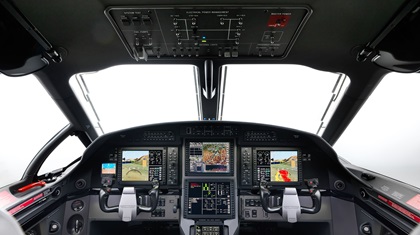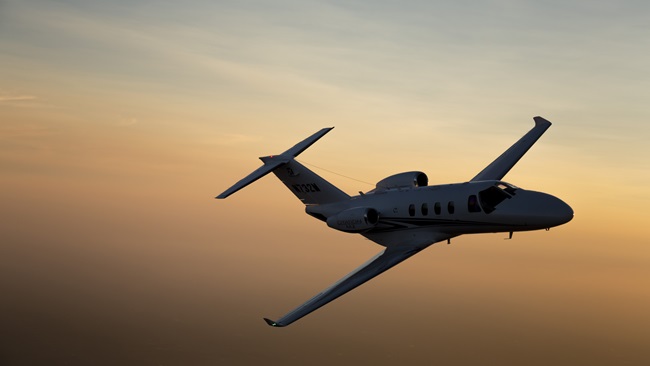Pilatus debuts PC−12 NGX
New PT6E-67XP engine has digital controls, autothrottle
Pilatus unveiled a new version of its best-selling PC–12 line of single-engine turboprops, the PC–12 NGX, on October 21 at the National Business Aviation Association's annual convention in Las Vegas.
The PC–12 NGX also comes with new propeller and engine controls. Gone are the PT6A’s traditional propeller and engine controls, in favor of a single-lever power control for thrust and propeller speed. The controls have dual-channel integrated electronic propeller and engine control with full digital envelope protection. The propeller can operate in what Pilatus calls a low prop speed mode, which brings propeller speeds down from 1,700 rpm to 1,550 rpm. The result is lower cabin and flyover noise levels.

The new engine comes with a 5,000-hour recommended time between overhaul, and on-condition hot section inspections. The engine’s maintenance support, with Pratt & Whitney’s Eagle Service Plan (ESP), includes full foreign object damage coverage—the first to be offered to the general aviation market, Pilatus says. Operators enrolling in the ESP can realize “at least a 15 percent reduction” in hourly engine operating costs, according to a Pilatus press release.
The PC–12 NGX’s Advanced Cockpit Environment (ACE) avionics have touch-screen controls and a new emergency descent mode. Envelope protection against excessive bank angles is also included as standard equipment. The ACE—based on the Honeywell Epic avionics platform—also has SmartLanding and SmartRunway awareness systems, ATC playback, electronic checklists linked to Crew Alerting System, worldwide graphical weather, pilot-defined visual approaches, and support for European PM-CPDLC (controller-pilot datalink communications) mandates.

The PC–12 NGX has cabin windows 10 percent larger than previous PC–12s, new executive seats that fully recline, and a new headliner that increases headroom. Six different interiors are available, as well as custom designs and paint schemes.
Base price of the airplane is $4.39 million. Typically equipped PC–12 NGXs will sell for $5.369 million. Pilatus said that FAA and European Union Aviation Safety Agency certification is expected in December 2019, and deliveries will begin in the second quarter of 2020. The first production PC–12 NGX is on display at NBAA's Business Aviation Convention and Exhibition static display at Henderson Executive Airport in Las Vegas.




